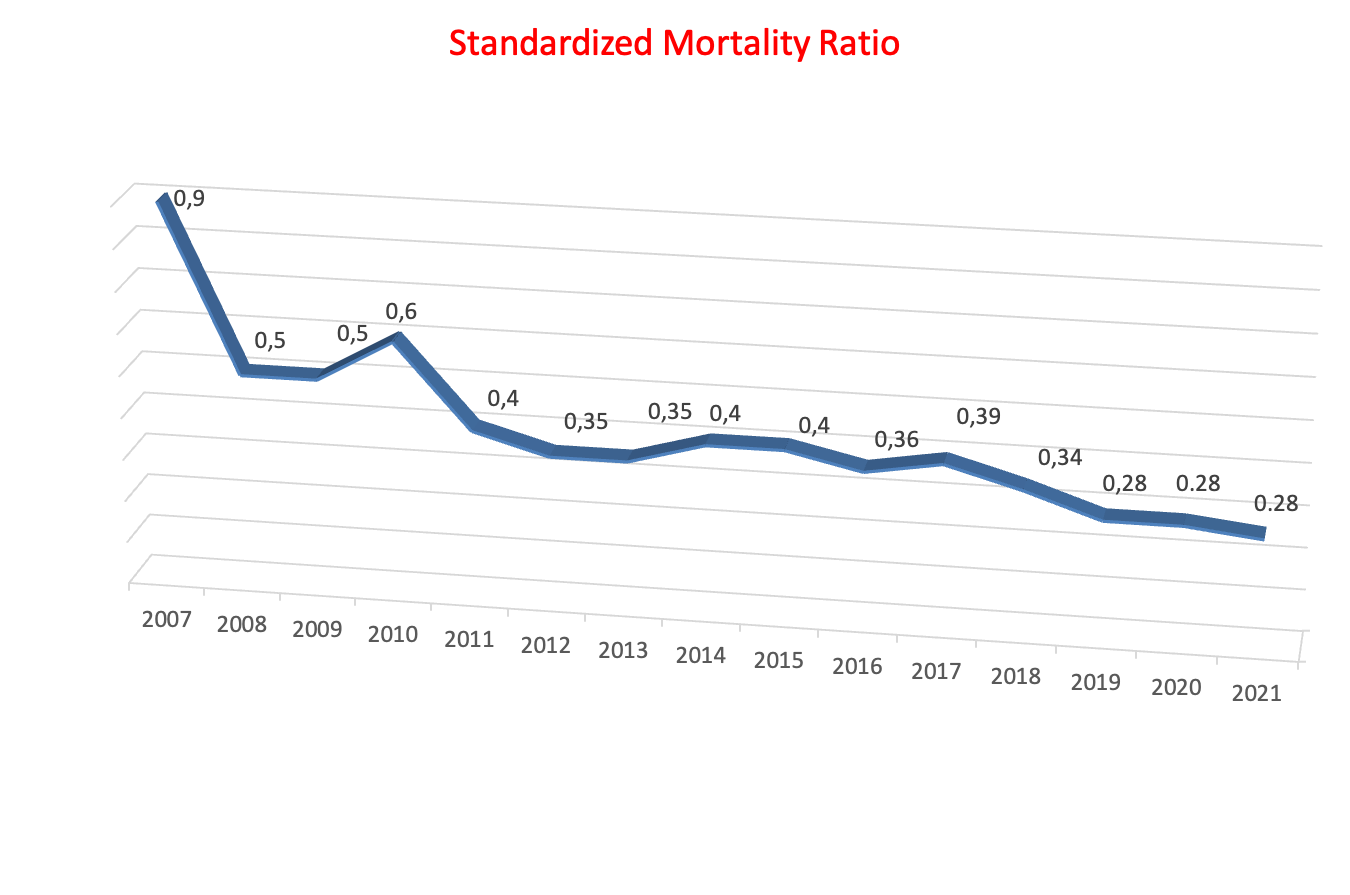- The number of persons in each age group in the population being studied
- The age specific death rates of the general population in the same age groups of the study population
- The observed deaths in the study population
Standardized mortality ratio:
The standardized mortality ratio is the ratio of observed deaths in the study group to expected deaths in the general population. This ratio can be expressed as a percentage simply by multiplying by 100.
The SMR may be quoted as either a ratio or a percentage. If the SMR is quoted as a ratio and is equal to 1.0, then this means the number of observed deaths equals that of expected cases. If higher than 1.0, then there is a higher number of deaths than is expected. SMR constitutes an indirect form of standardization. It has an advantage over the direct method of standardization since age-adjustment is permitted in situations where age stratification may not be available for the cohort being studied or where strata-specific data are subject to excessive random variability.

Definition
Expected deaths would then be calculated simply by multiplying the death rates of the general population by the total number of participants in the study group at the corresponding age group and summing up all the values for each age group to arrive at the number of expected deaths. The study groups are weighted based on their particular distribution (for example, age), as opposed to the general populations's distribution. This is a fundamental distinction between an indirect method of standardization like SMR from direct standardization techniques.
The SMR may well be quoted with an indication of the uncertainty associated with its estimation, such as a confidence interval (CI) or p value, which allows it to be interpreted in terms of statistical significance.